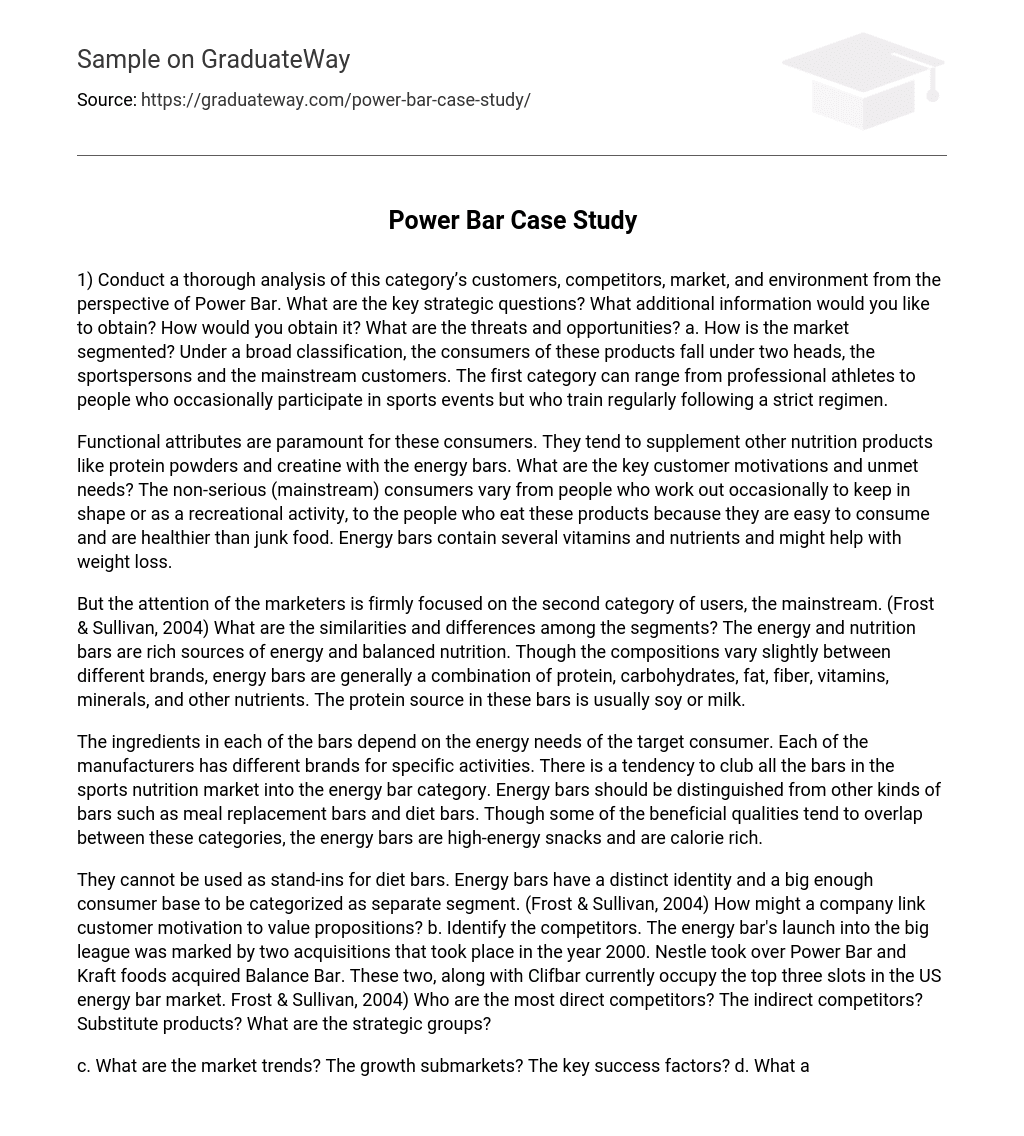Power Bar should thoroughly analyze its customers, competitors, market, and environment to identify key strategic questions and gather additional information. This includes understanding the threats and opportunities and segmenting the market.
In a general classification, there are two groups of consumers who use these products: sportspersons and mainstream customers. Sportspersons can vary from professional athletes to individuals who occasionally engage in sports events, but consistently follow a strict training schedule. For these consumers, functionality is crucial. They often complement their nutrition intake with energy bars in addition to other products like protein powders and creatine.
According to Frost & Sullivan (2004), the key customer motivations and unmet needs vary among consumers who use energy bars for different reasons. These reasons range from occasional workouts to maintain fitness or for recreational purposes, to individuals who consume these products as a convenient and healthier alternative to junk food. Energy bars are known to contain various vitamins and nutrients that may aid in weight loss. However, marketers primarily target the mainstream consumers.
What are the commonalities and distinctions of the segments? The segments of energy and nutrition bars are both abundant in energy and balanced nutrition. While there may be slight variations in composition among different brands, energy bars typically consist of protein, carbohydrates, fat, fiber, vitamins, minerals, and other nutrients. The main source of protein in these bars is typically soy or milk.
The composition of each bar varies depending on the energy requirements of the intended consumer. Each manufacturer has different brands for specific activities. It is common to group all bars in the sports nutrition market under the category of energy bars. However, it is important to differentiate energy bars from other types of bars like meal replacement bars and diet bars. Although there may be some overlap in beneficial qualities among these categories, energy bars are high-energy snacks that are calorie-dense. They cannot be used as substitutes for diet bars. Energy bars have their own distinct identity and a significant consumer base, making them a separate segment.
(Frost & Sullivan, 2004)
How can a company relate customer motivation to value propositions? Additionally, competitor identification is essential. In the year 2000, two acquisitions marked the energy bar’s entry into the major league: Power Bar was taken over by Nestle, while Balance Bar was acquired by Kraft Foods. These three companies, along with Clifbar, currently dominate the US energy bar market





